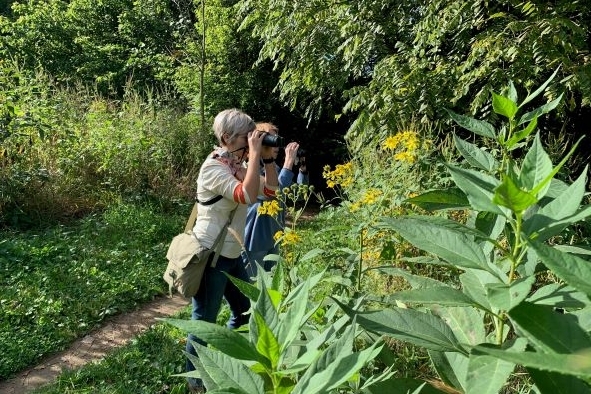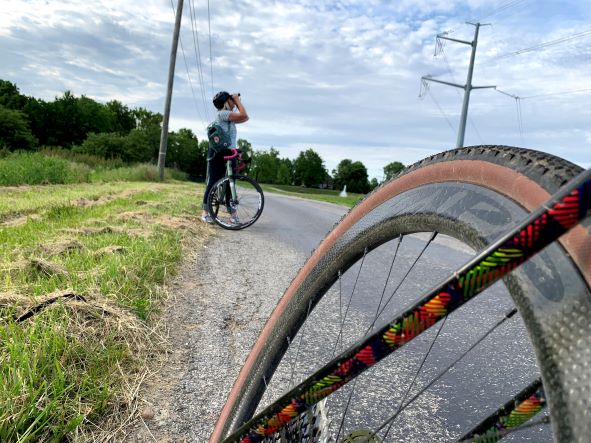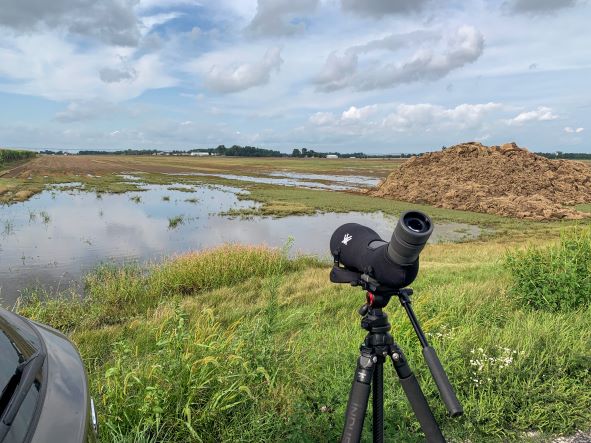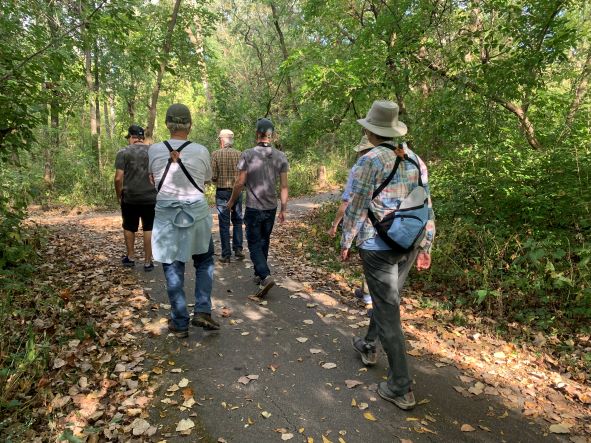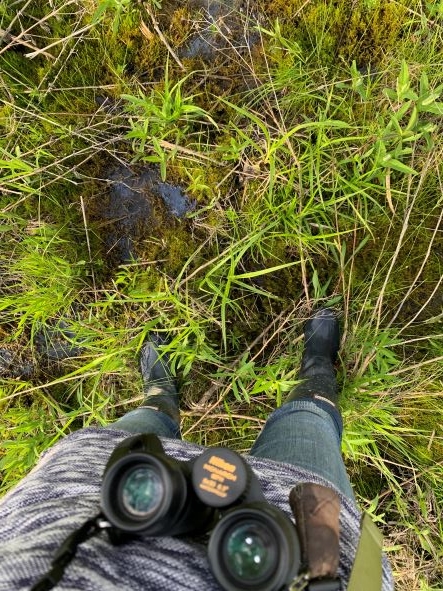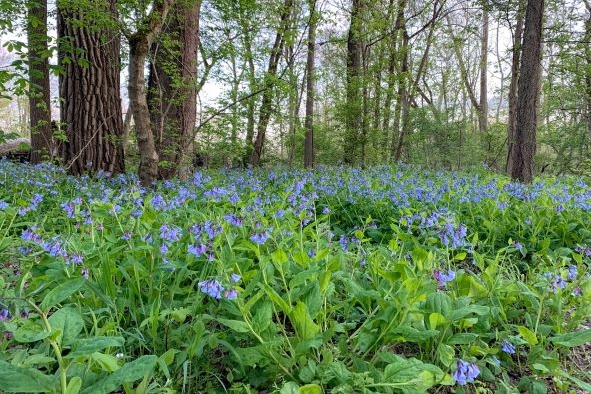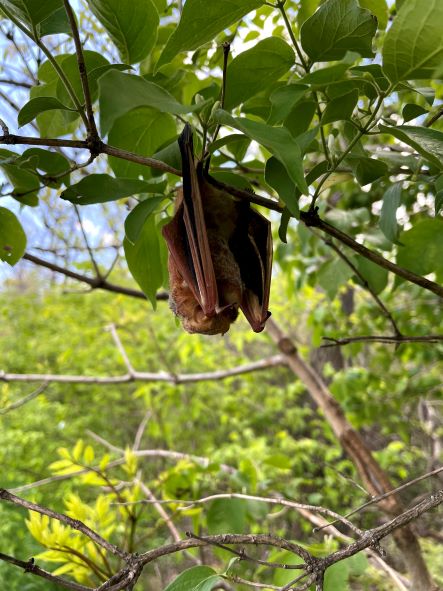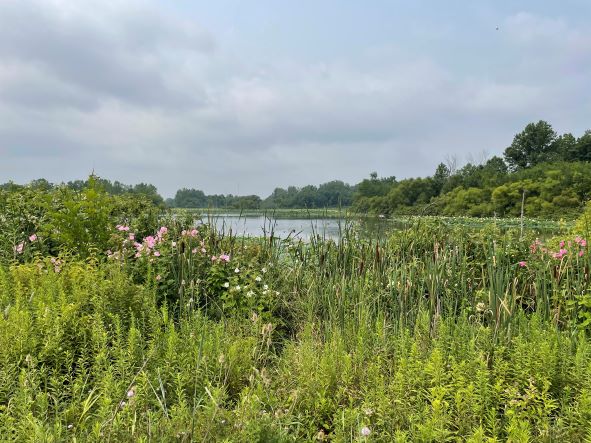Seven Different Ways to Go Birding in Boone County
By Whitney Yoerger • whitney.yoerger@gmail.com
Boone County should be at the top of any list of best birding destinations in central Indiana because it has a lot to offer in terms of woodland and grassland birds, including the unusual “grasspiper” shorebirds. The challenge of finding specific families of birds is one of the reasons I enjoy Boone County so much. However, I may be biased toward this type of birding. While I’ve spent most of the last five years exploring Zionsville for my five-mile radius list, I’ve always made time to venture to the county’s outskirts to see what’s out there — and so should you.
Starkey Park is only four miles northeast of Eagle Creek Park’s mudflats as the crow flies. Many of the wood warbler species found south at Eagle Creek Park, including the coveted skulkers, Kentucky Warbler, Hooded Warbler, Mourning Warbler, and Connecticut Warbler, can also be found in Starkey Park due to its location along a riparian corridor flowing into Eagle Creek. Seven rustic trails wind through the upper and lower meadows, the hillside, the woods, and the southern edge of Crazy Creek. Even at only 80 acres, you could spend several hours birding the park during spring and fall. In winter, you’ll find various ducks in the wastewater settling ponds at the park’s northeastern edge, west of the Zionsville rail trail.
Creekside Nature Park + Creekside Corporate Park
These two Zionsville community parks are separated by, you guessed it, a creek. The nature park is on the north side of the property, while the corporate park is on the south side. Both are good for birding, particularly if you have limited time or want to cover less ground. Parking is nearby, and the trails are paved, making the parks accessible to a wide range of birders. Because the corporate park is being built as a “conservation office park” surrounded by ravines and woodlands, the habitat will change over time. The magic, however, happens in the scrubby areas that will not be developed. These parks are also less crowded, giving you more chances for uninterrupted birding.
Browning Marsh is a unique wetland nestled between commercial warehouses where Zionsville meets West Carmel. Central Indiana Land Trust, Inc (CILTI) owns and manages the preserve with limited access. Entrances into the property, regardless of where they begin and end, may infringe on the nearby businesses, so contact CILTI for parking instructions. The best time to visit this location is in April and May, before the vegetation reaches your knees, the poison ivy is at its strongest, and the mosquitoes are in abundance. There are no formal trails, so always wear long pants and check for ticks afterward. If you can get past these challenges, you may find some exciting species, such as rails, bitterns, Sedge Wren, Black-crowned Night-Heron, and Worm-eating Warbler.
Everyone agrees that cemeteries are great spots for birding, and Oak Hill Cemetery in Lebanon is no exception. With its woodland edges, mature trees in large open areas, the southern border along Prairie Creek, and surrounding agricultural fields, this park is a hidden gem in the county. Some may find it strange to be birding in cemeteries, but these are peaceful places. Just ask Cloyce Hedge, the hotspot’s top birder, whose discoveries have helped put it on the map. There is limited parking, but you can usually leave your car on the side of the driving paths for the duration of your visit.
While sod farms gave birth to America’s overly idealized landscaping obsession, these are ideal habitats for certain shorebirds. In April, July, and August, Lebanon Sod Farm is one of the best places to look for Buff-breasted Sandpiper, Baird’s Sandpiper, White-rumped Sandpiper, Western Sandpiper, and Upland Sandpiper. To get there, use the address for IndySod.com. Look out the window into the fields along CR 350 W, Hazelrigg Road, and CR 400 N. You can safely scope the fields after pulling over to the side. Just keep in mind that you’re birding on country roads, where vehicles can pass at high speeds. You’ll know you’ve arrived at the sod farm’s boundaries when you reach cornfields.
County Roads
Boone County is ripe for birding exploration, as many have discovered while driving around looking for birds. Every year, Bobolinks, Grasshopper Sparrows, and Northern Bobwhites can be found in the rural areas between Northfield and Big Springs. Driving the gravel roads in and around Thorntown could result in Sedge Wren, a species that’s previously nested off of W 200 N. As a sidebar, Boone is well-known in the cycling community, so adventurous birders with a gravel bike can leave their car at Moontown Brewing in Whitestown for a more immersive birding experience.
Wild Birds Unlimited owners Jim and Nancy Carpenter have generously supported the Zionsville Parks and Recreation Department in initiating the conversion of Northfield’s Wolf Run Golf Course into a 215-acre nature preserve. The property will be under construction for some time. Still, the wait will be worthwhile with the promise of wildlife blinds, rustic paths, trails, shelters, art features, and a nature center. Keep your ears and eyes peeled for updates on this preserve, which will undoubtedly become a fantastic birding destination.
A disclaimer: This is not an exhaustive list, and the places I’ve included are not in any particular order. My goal was to simply outline a variety of ways to enjoy birding in the county. I’m happy to discuss Boone birding with anyone, whether in the field or over a beer. Email me at any time.
Upper Left — Bike-birding is easy to do in Boone Co.
Upper Center — August is a good time to scope for shorebirds at the Lebanon sod farm.
Upper Right — Birders out for a bird walk with the Yoergers in early October.
Center — In late April, Virginia Bluebells carpet the ground in Starkey Park.
Bottom Left — Swampy Conditions at Browning Marsh.
Bottom Center — Browning Marsh is beautiful in August, but wear long pants because you’ll be bushwhacking exclusively.
Bottom Right — Whitney Yoerger discovered an Eastern Red Bat once while birding at Browning Marsh.
All photos courtesy of Whitney and Jonathan Yoerger.

